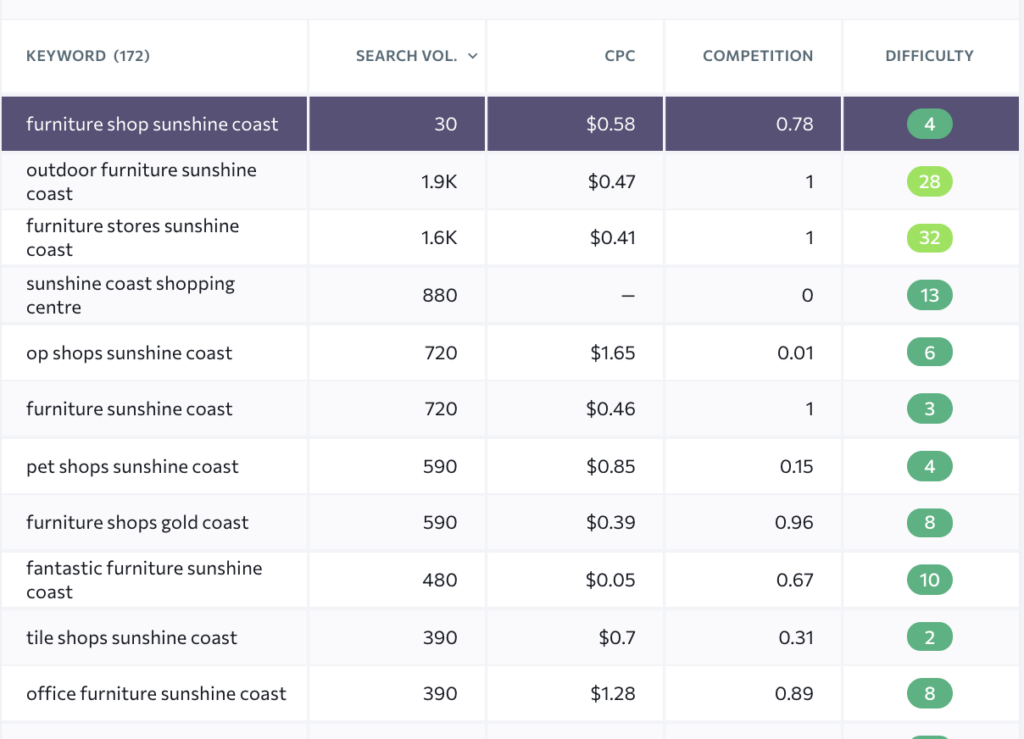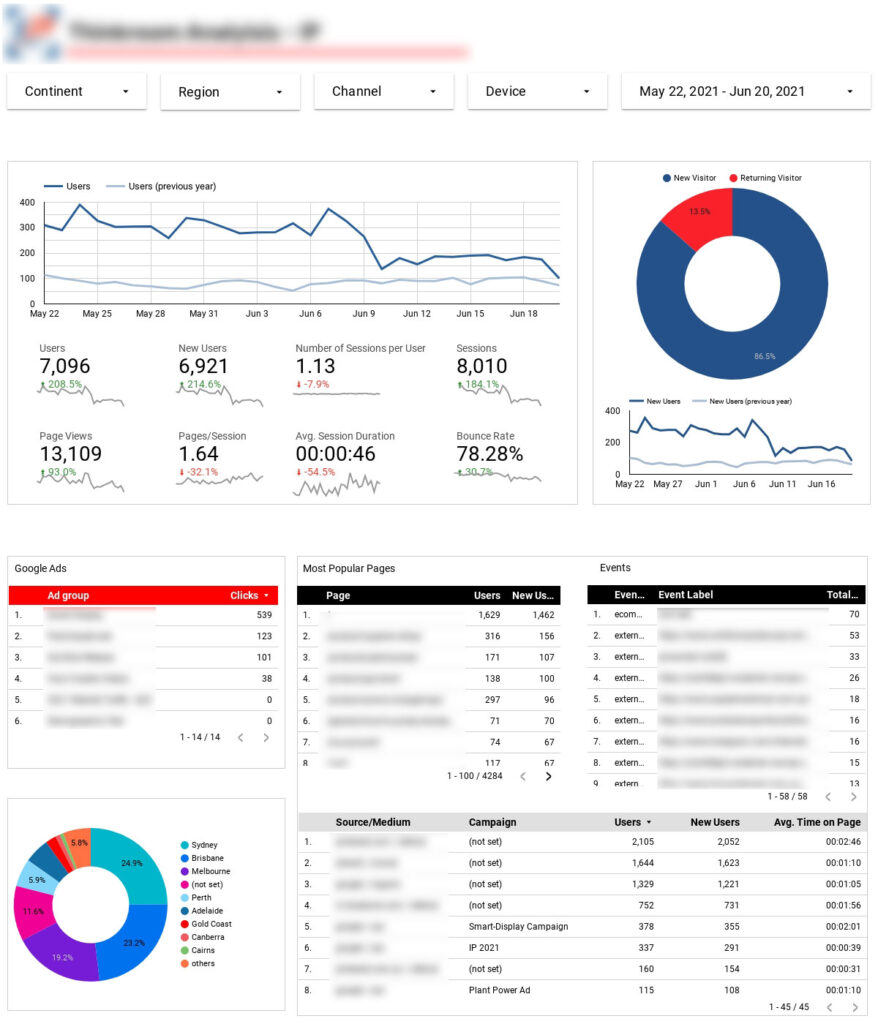If you are working hard on your digital marketing and SEO strategy or even paying a digital agency to help you, but you’re just not moving in Google’s ranking system, maybe there’s a reason. In this article, we’ll give you tips on how to check whether you have any Google penalties, so you can then change your techniques to better suit what Google is looking for. Do this, and it’s likely you’ll see your site start to advance in rankings over time.
What is SEO and How Does it Work?
SEO stands for search engine optimisation, which is just a fancy way of describing the techniques you can use to make your site one of the first Google search results. There are many facets to SEO; background, on-page, and off-page techniques are all wrapped up to become part of a larger SEO strategy. When you do this well, you will slowly rise in the search engine rankings, with the goal of ultimately getting to the first five spots!
People will generally perform a search and then select from the first page of search results, barely ever clicking through to the second page, much less the third or fourth. That’s why you want your site to rank front and centre when people search for services like yours – SEO can help you to do that.
11 Ways to Check if You Have Google Penalties
Back in the early days when the Internet was first born, tech-geeks cottoned on to how Google used to pick up on keywords and keyword phrases. For example, if you owned a furniture shop in Noosa, then a keyword phrase might be “buy table Noosa”. The tech-geeks exploited this and created web pages stuffed with keywords, so much so that the content on the websites was unnatural and gave the user a pretty terrible experience.
Google wised up and started penalising unnatural sentences. There are a lot of techniques that are labelled as black-hat methods of search engine optimisation. If you’re trying to scam Google, it’s probably a black-hat technique. Many SEO agencies still do this, and most customers don’t read the content on their websites.
1. Read your website
While you’re reading your website, look for opportunities to link to another page on your website design. For example, if your sentence talks about a matching vase to go on the coffee table, then link the words “vase” to the actual product. But remember, your primary focus when reading the website is to make sure the reader gets a natural and compelling experience.
The best SEO experts suggest that you do, in fact, use keywords, but you do so naturally and not too much. Your content should be informative and helpful to the reader on your website. The best marketing companies have software to ensure you’re not overusing keywords.
2. Keywords
Getting your keywords right in the first place is the foundations of SEO. Ask to see your keyword research strategy. Each page should have a different keyword phrase, and you should be able to see how many Australians are searching for that phrase per month and the competition over that keyword phrase. It’s often smart not to go for the really large search volumes, instead to choose the very relevant, low hanging fruit.

3. Review your Google Analytics
Google Analytics is a handy tool for gaining insight into how your website is performing. You can measure almost everything; how long someone stays on each page, where they’ve come from, and SEO performance. If you haven’t got access to this, get it installed immediately. You can create goals to measure performance and then ask your agency to hook up something called Data Studio that can give you easy-to-understand reports on a weekly basis, direct to your inbox.

With Analytics, you’ll be able to watch what’s called ‘organic search’. The word ‘organic’ represents your SEO performance. It’s what Thinkroom labels as the ‘pull factor’. Most campaigns are ‘push marketing’; SEO, however, is the holy grail. It’s where we become so attractive that customers find you without you even having to pay for it.

4. Check Where You Rank
While you’re still logged into Google Analytics, take a look at what ranking you have been gaining for your main keywords. If your ranking has dropped, that’s not a good sign! You want to at least be in the top 50 search results and rising, whereas if you go below that, no one is likely to see your site. If it’s gotten so bad through the use of black-hat techniques from shady SEO companies on the other side of the world, and your website has been banned by Google, you won’t have a page rank listed at all.
5. Has Your Site Been Crawled?
Think of Google as a giant library of information. You need some form of reference to find the information you’re searching for, and Google does this by indexing. It indexes by crawling your website page by page and indexing the headings and content. If you discover that your site does not even appear on search engine results, it could always be because of a Google update, or it could be because Google has not yet sent its search engine robots to crawl your site. Check if your site has been crawled by adding ‘robots.txt’ after your domain. If the message says ‘disallow’, your website may be blocking the search engine from crawling it! This doesn’t necessarily mean that Google is penalising you, but there could be an issue with the technical back end of your site. Contact your web developer or an SEO expert, and this should be easily fixable through a tool called Google Console.
Within Google Search Console, you can also check under the ‘Security and Manual Actions’ section to see if there has been a manual penalty applied to your account. If you do have a manual penalty, there should be a message explaining why so that you can quickly rectify the situation.

6. Verify that Your Domain is in Google Index
This is a simple one – simply type your site’s full web address into Google. Your site should be one of the first to show up. If you can’t find your site this way, that’s a huge red flag that Google is penalising you. The first thing to do in this scenario would be to revisit the security and manual actions section of Google Analytics to check if there’s been a manual note put on your Google account.

7. Images on your site.
Right-click on images on your site, hit save and then look at how they’re named. If they don’t have your keyword phrase in them, there’s a missed SEO opportunity, and your SEO agency should be given a hurry up.


8. Https
If your website is only running Http, people will get a message that your site connection isn’t secure. You might find that many people are leaving before they arrive because of this warning message. Google penalties are given to sites that are not trustworthy, and the Https represents that a security certificate is in place and the connection is secure. You can find this out by looking at your domain, e.g., https://www.thinkroom.com/


9. Map, Phone & Address.
Does your site have a clickable phone number and address? This is important because the majority of internet users search by mobile and what this means is that when they are travelling, a simple click to call you or to navigate to your address is a great user experience. Google ranks websites with great user experience. You should also ensure Google maps is featuring on your website. If it’s not, sort it out immediately.

10. Indicia
You’re probably wondering what the heck is an indicia. It’s that little graphic in the tab of your browser that shows the user it’s your website. This is SEO 101 stuff. If you don’t have one, you need help. Although not major, it’s an indicator to Google that your website isn’t properly maintained.

11. Backlinking
Go to all the business directories you can think of and list your business. However, be aware that Google may penalise you if you write the same content on each directory. You need to create citations, each different but with similar content and using your keyword phrases. Start by listing on Google My Business. Don’t buy links from irrelevant websites, as Google will know, and this is a black-hat technique.

There’s plenty more we could write, but hopefully, this article has been useful to give you an understanding of whether you’re on track or not. If you need further advice, please feel free to contact us. Thinkroom can help – we have a team of SEO experts and marketing advisors who are ready to guide you through what you need to do to have good SEO on your website.
An SEO strategy is a significant undertaking, and there are so many different facets to it – we take the hard work out of it by doing it all for you. No longer wonder whether Google is penalising your site, as we’ll set you up for success with SEO the right way. Contact us today to find out more about we can help your brand gain some traction through marketing and SEO.



